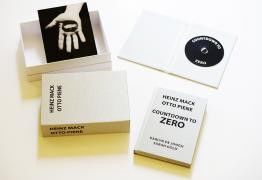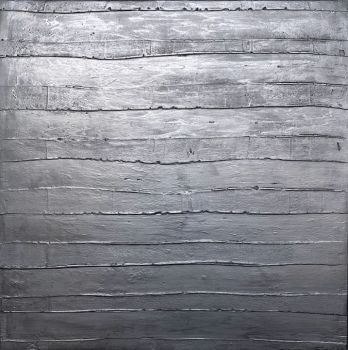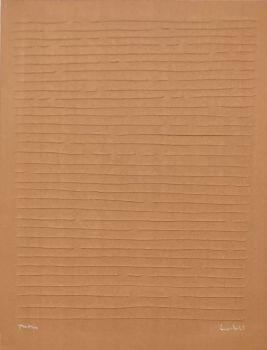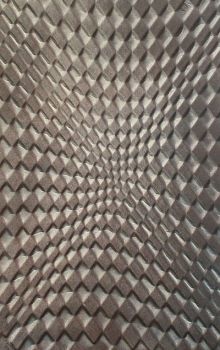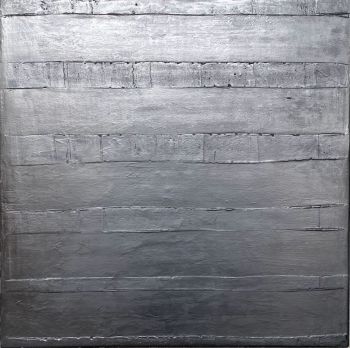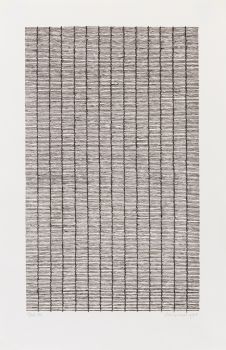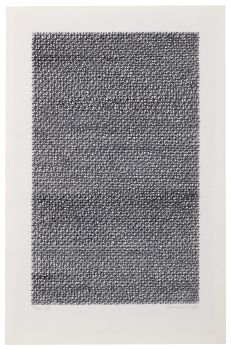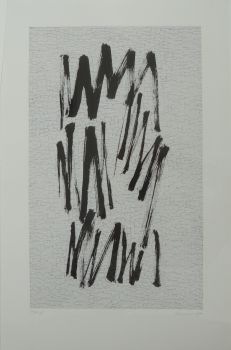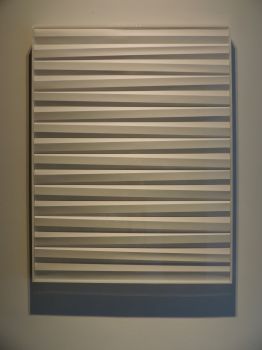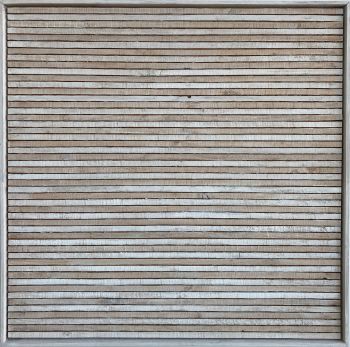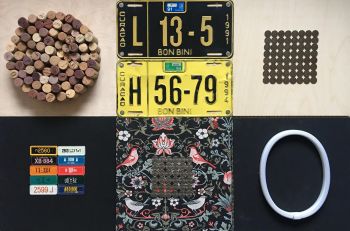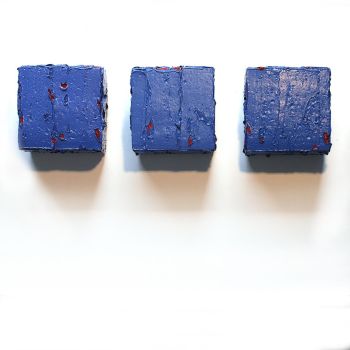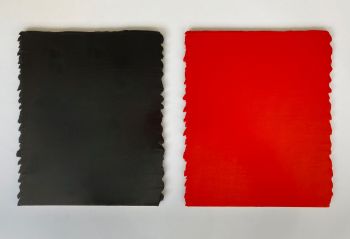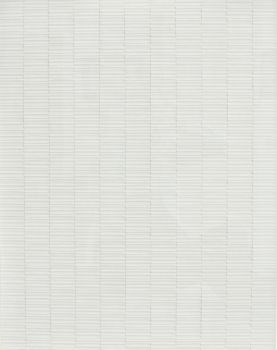The radical art of the ZERO Art Movement
Today, the ZERO and the Nul movement are a household name among art connoisseurs and collectors. The art appears to fit our current times remarkably well. With their clean, rudimentary appearance, the works evoke a sophisticated kind of cool, hip and contemporary, as if you were walking into the Apple store. The origin of Zero art, however, was a bit more modest and not at all intended as salable art. In this article we try to provide more background on what exactly Zero or Zero art is. How this art movement originated, what its main characteristics are and where you can best buy this art nowadays.
The birth of the ZERO movement
Around 1957, two German artists, Heinz Mack and Otto Piene, called for a new form of art. This call would form the basis for the international ZERO movement and first manifested itself in a manifesto and a magazine and a group without a leader or hierarchy (also represented in the circle of a Zero). A little later, Günther Uecker joined them.
 On the left Günther Uecker and on the right gallery owner Alfred Schmela at his gallery with the poster for a ZERO exhibition
On the left Günther Uecker and on the right gallery owner Alfred Schmela at his gallery with the poster for a ZERO exhibition
Incidentally, the name ZERO refers to the starting moment after the countdown for launching a rocket (the optimism of the “space age” in the face of the darkness of totalitarianism).
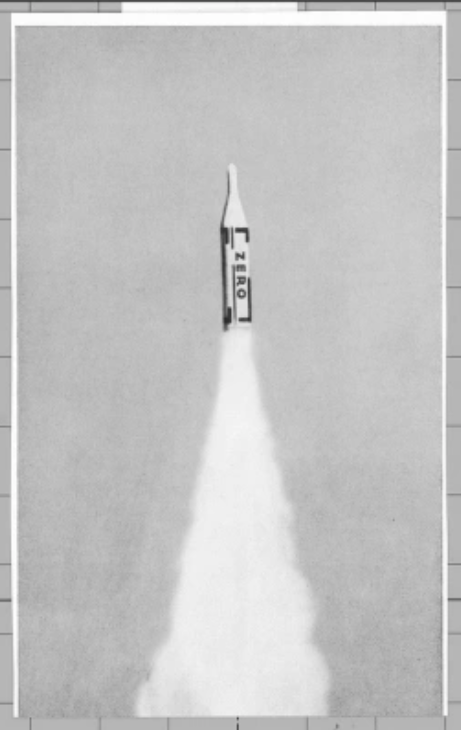 The ZERO rocket as a symbol for the ZERO or Zero art movement
The ZERO rocket as a symbol for the ZERO or Zero art movement
For these German artists, the zero point referred to a new beginning after the vacuum left by the war in German cultural life: empty art libraries, a Germany isolated from Europe and the memory of the war.
They were looking for a new beginning in a time full of promise, mainly represented by technological progress and new international partnerships: the time of reconstruction and the German Wirtschaftswunder.
 The exhibition "Zero" in the Stedelijk Museum Amsterdam, 1965
The exhibition "Zero" in the Stedelijk Museum Amsterdam, 1965
In doing so, they gave movement and the “heavenly” elements fire, air and light associated with the optimism of the “space age” a special and positive, hopeful meaning as raw materials of a new art. For example, they “painted” with fire and made works of art with light or about the effect of light (Heinz Mack).
Soon Italian artists in particular (Enrico Castellani, Augustino Bonalumi, Nanda Vigo and Pierro Manzoni) and French artists (Yves Klein, Bernard Aubertin, Jean Tinguely) joined in loose associations.
 One of the founders of Zero art movement Heinz Mack at work in his studio
One of the founders of Zero art movement Heinz Mack at work in his studio
There was also a lot of attention for kinetic works and sensory effects such as optical illusions through the action of light (Mack) and rubber sculptures that move by filling themselves with air and flying “sculptures” filled with helium (Otto Piene).
The Zero group maintained numerous international contacts, including with the Italian Lucio Fontana, the Frenchman Yves Klein (who emphasized the importance of pure color perception) and the Swiss Jean Tinguely (kinetic art, rotating objects).
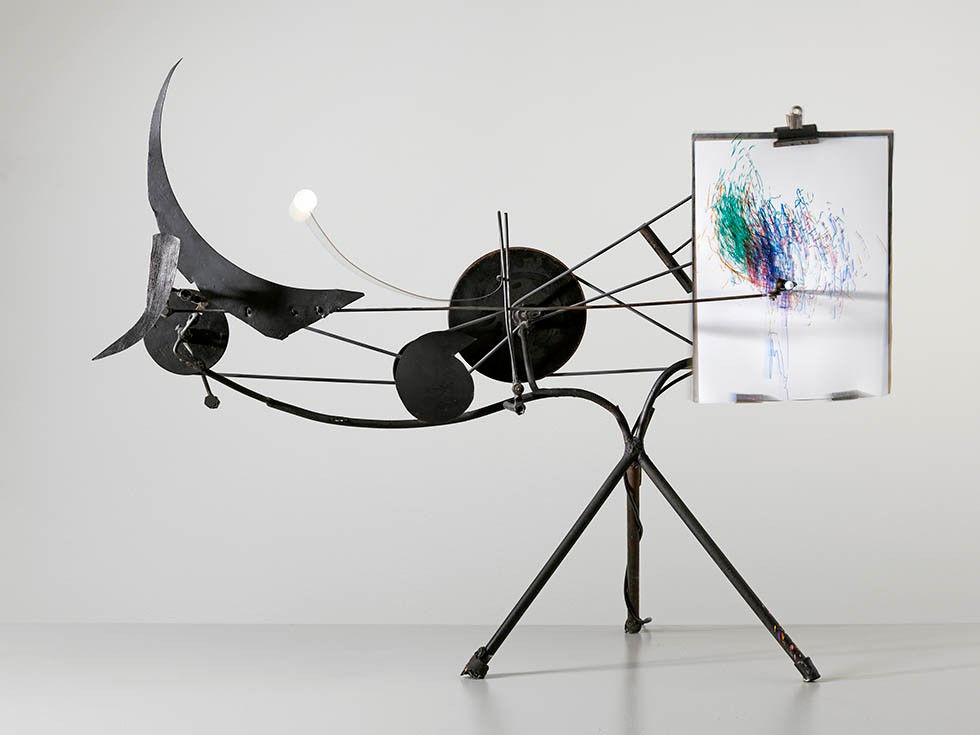 Installation ZERO by Jean Tinguely, Méta-Matic No. 10, 1959
Installation ZERO by Jean Tinguely, Méta-Matic No. 10, 1959
The Nul movement in the Netherlands
In contrast to the emotional, spontaneous painting of the Cobra group (including Appel and Corneille), the Nul artists (including Schoonhoven and Peeters) in the early 1960s presented a detached and cool interpretation of reality.
They did this by saying goodbye to the easel and focusing on materials that lend themselves to representing the essence of reality in serial patterns, in repetitions of forms and by refraining from emotion and beauty. In art, emotion quickly leads to cheap sentiment and beauty has -according to poet Lucebert- burned her face.
Around 1960, a number of Dutch artists (Armando, Jan Henderikse, Henk Peetersen, Jan Schoonhoven and Herman de Vries) who previously worked under the name "De Informele Groep" (from 1958 to 1960 with Kees van Bohemen, without Herman de Vries) joined joined Zero and henceforth called itself “Zero”.
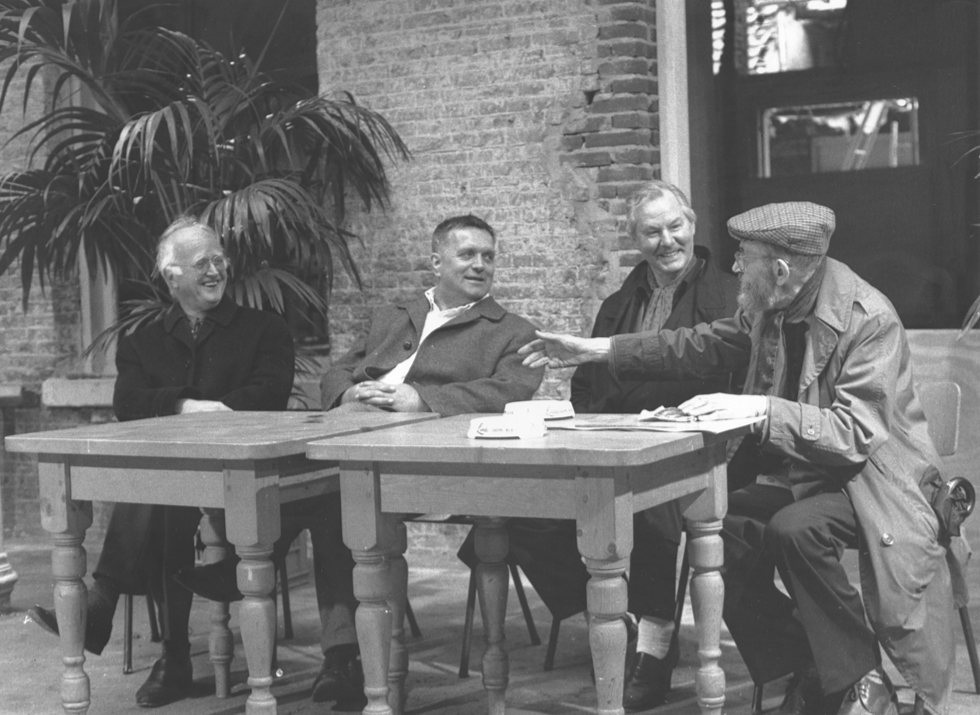 Dutch artists of the 'Zero Movement', from left to right: Henk Peeters, Jan Hendirkse, Armando and Jan Schoonhoven in Delft
Dutch artists of the 'Zero Movement', from left to right: Henk Peeters, Jan Hendirkse, Armando and Jan Schoonhoven in Delft
What the Nul movement wanted above all was to reject the elitist nature of art forms such as painting, represented at the time mainly by Abstract Expressionism with all its emotion and other forms of informal painting.
From then on they wanted to make “anti-painterly” art based on universally accessible yet beloved industrial disposables and “objets trouvés” leading to conceptual and often minimalist art expressions.
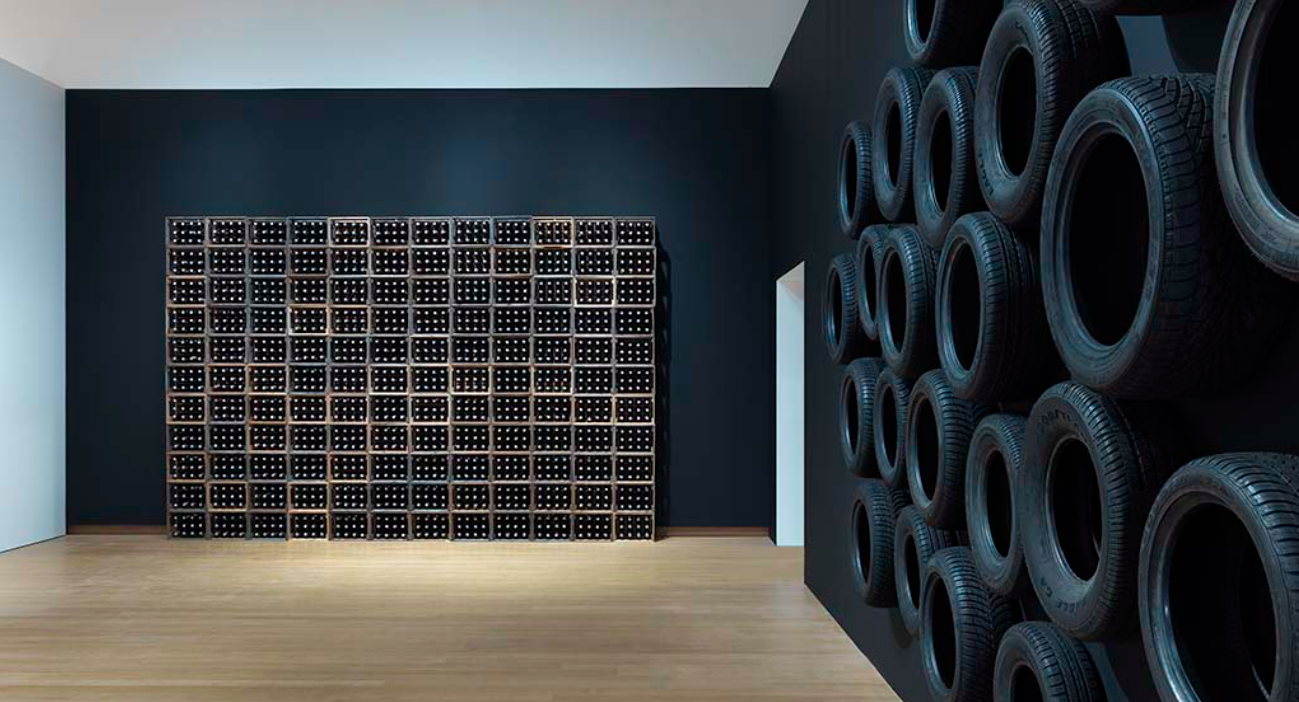 Zero art with work by Jan Henderikse and on the right Armando's car tires on the wall
Zero art with work by Jan Henderikse and on the right Armando's car tires on the wall
Cardboard, papier-mâché, toilet rolls, plywood (Schoonhoven), coins, bottles, corks and other everyday objects (Henderikse) formed the basis of this new art, which is informal in nature and exhibits a new realism. Incidentally, this is not necessarily about a social critique, but about making itself.
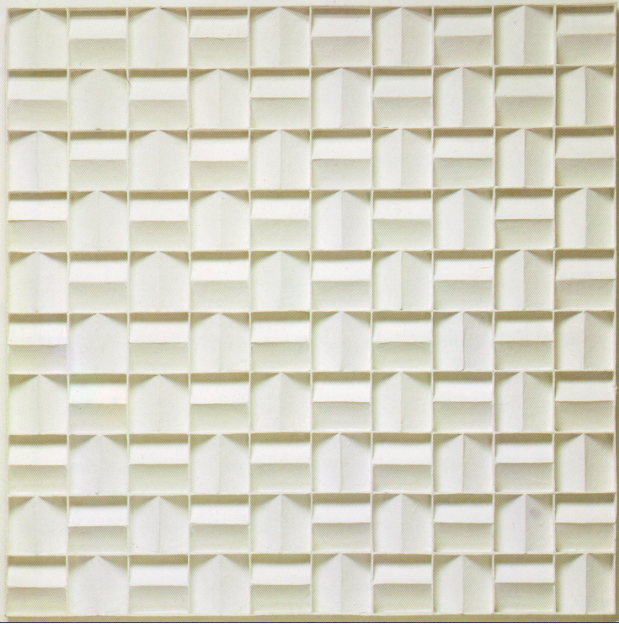 A typical example of ZERO or Nul art made by Jan Schoonhoven 1968
A typical example of ZERO or Nul art made by Jan Schoonhoven 1968
Principles and characteristics ZERO and Zero art
The characteristics of ZERO are light, movement and monochrome painting. To play with light and shadow, the artists often use nails, relief and ribbed surfaces. At ZERO there is no longer a border between painting and sculpture. They also strive for a symbiosis between nature, art and technology, an immaterial effect and spatial expansion.
ZERO artists, however, mostly worked in monochrome, often with white. They strove for a new harmony in the relationship between man and nature, and avoided individual traces in their work.
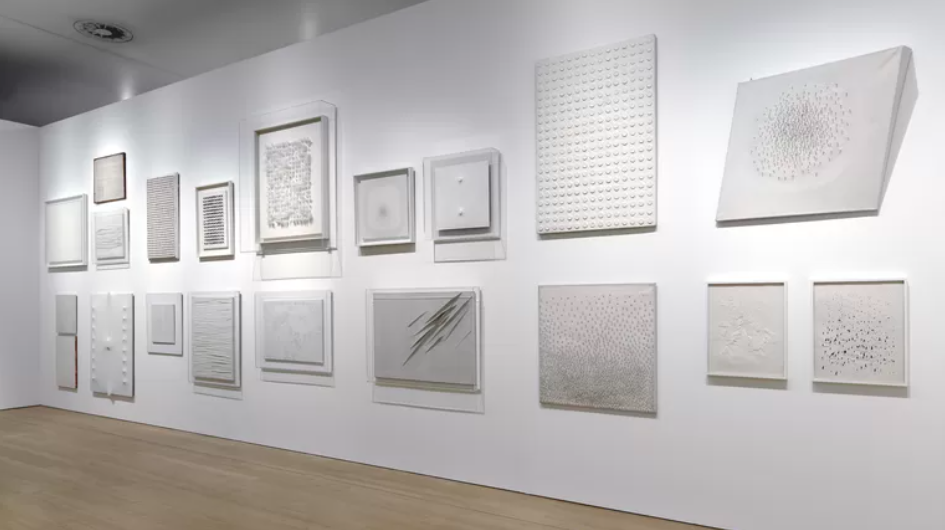 Example of Zero or Zero art in the Stedelijk Museum in Amsterdam
Example of Zero or Zero art in the Stedelijk Museum in Amsterdam
In their search for radical new ways of making art, ZERO artists also worked with monochromatic, bright colors such as red, yellow, blue, black and gold. In addition, experiments were carried out with the use of everyday objects such as nails, cotton wool, feathers, coins, tires and beer crates.
Spectacular effects were achieved by "painting" with fire and smoke, cutting, shooting, or using motors to spin, knock, and explode objects.
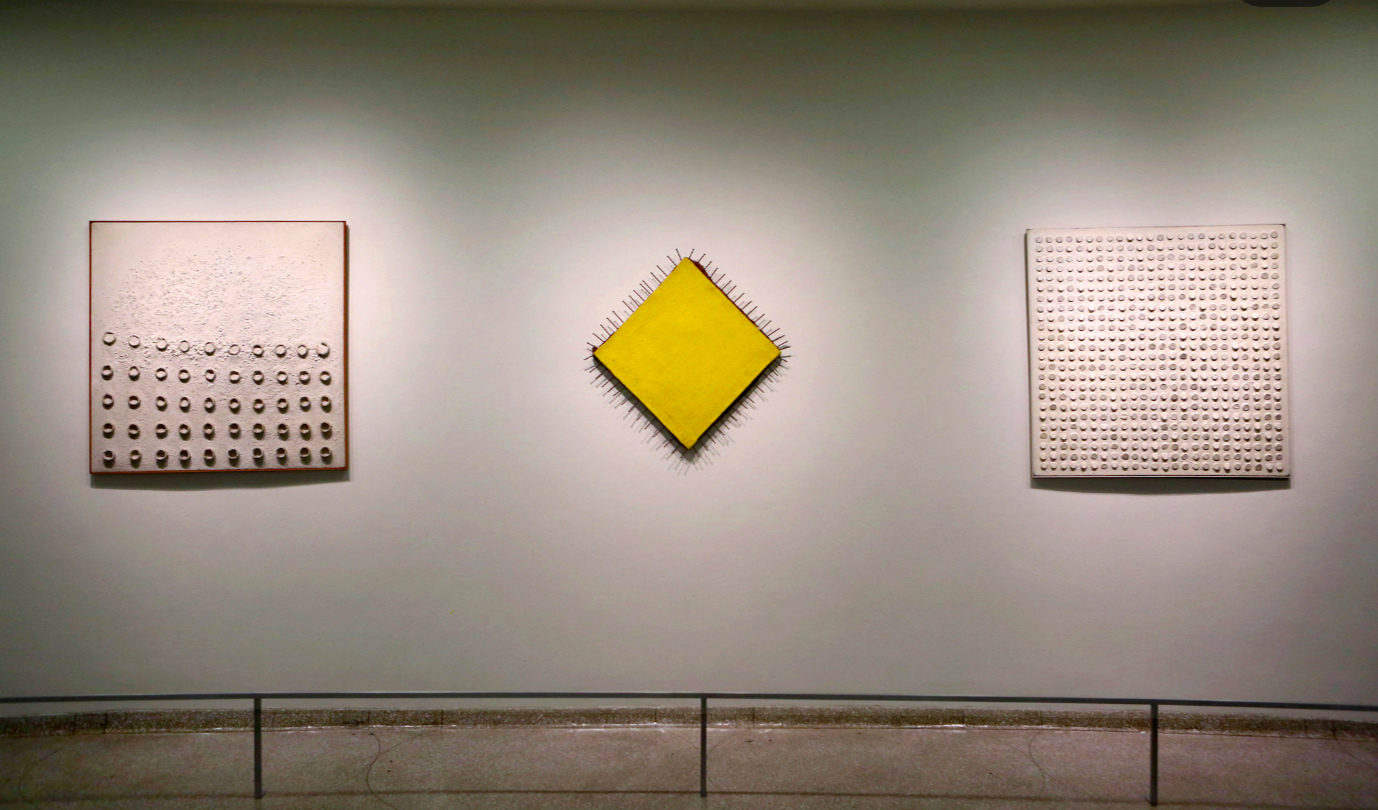 From left to right: “Dissolution of Formation” (1958), “The Yellow Picture” (1957–58) and “Cork Picture II” (1960) by Günther Uecker
From left to right: “Dissolution of Formation” (1958), “The Yellow Picture” (1957–58) and “Cork Picture II” (1960) by Günther Uecker
Glass and metal were used to create shiny surfaces on which light had free reign. Soft materials such as cotton wool or velvet were used to break through the visual character of art.
In addition, public participation was crucial in the performances and manifestations that the artists organized, outside on the street or in the wide landscapes that they admired so much and that they saw as the ultimate platform for or carrier of their work.
 More ZERO art by Günther Uecker, Gropiusbau, Berlin
More ZERO art by Günther Uecker, Gropiusbau, Berlin
In general it can be said that the work of Nul is characterized by:
Monochromy: Multi-colours make way for the use of a few colours, often black and red (Armando) and white (Jan Schoonhoven and Henk Peeters)
Repetition: Zero loved rhythm and regularity. Repetition of similar elements within a performance is typically 'Zero'. Think of the repetitive shapes in the reliefs of Schoonhoven and the reliefs of corks and pennies by Jan Henderikse.
Seriality: The authentic work of art was declared dead by Nul. Modern times and industrial materials, on the other hand, were embraced. The machine reproduction of 'art products' was typically Nul. With the exception of Jan Schoonhoven, all members made multiples (series products).
Directness of material: A Nul work had to be an 'objective-neutral representation of reality', according to Jan Schoonhoven. The artist's handwriting had to be avoided as much as possible. This was achieved, among other things, by 'unmediated presentation': materials, often objects, were presented as 'art products' without processing or addition.
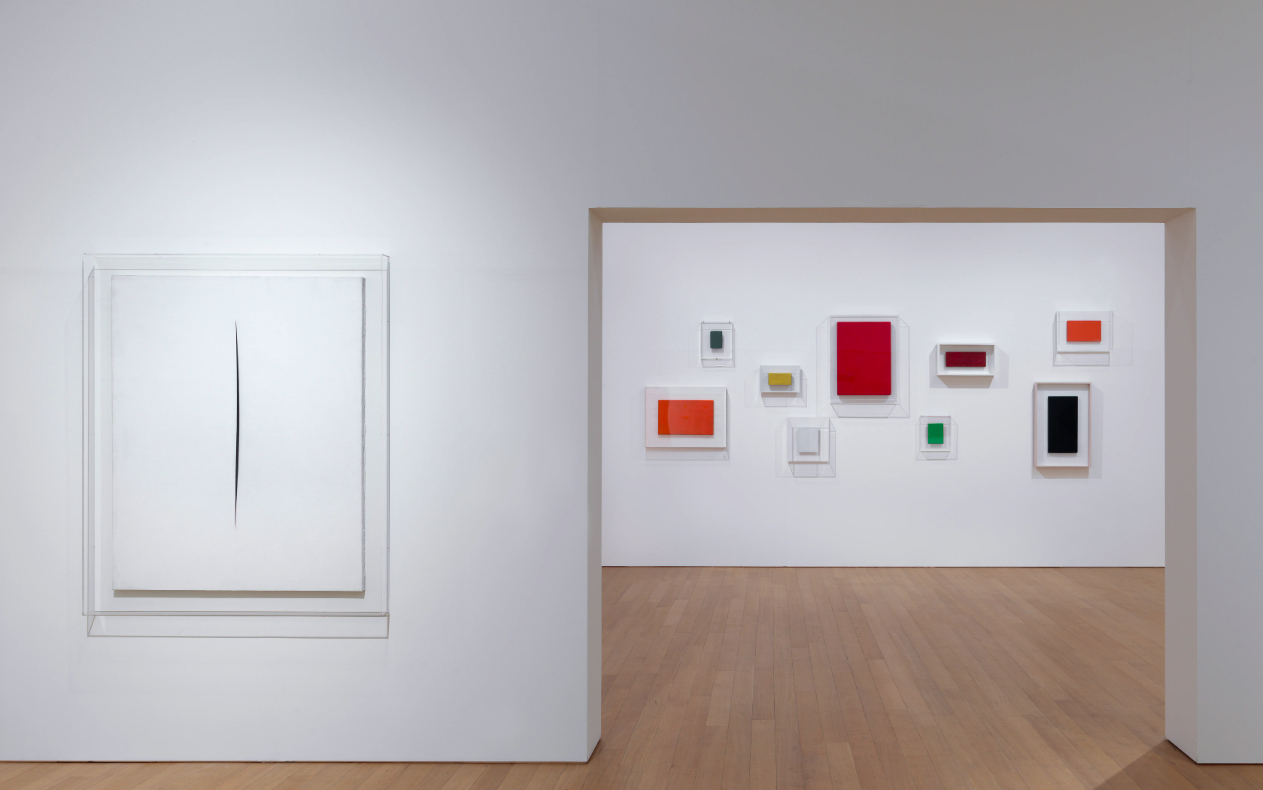 On the left a cut canvas by Lucio Fontana; on the right various colored monochromes by Yves Klein
On the left a cut canvas by Lucio Fontana; on the right various colored monochromes by Yves Klein
ZERO-art or Nul-kunst for sale
Today, Zero and the Nul movement are a household name among art connoisseurs and collectors and works by German and Italian Zero artists in particular sometimes fetch millions at the major auction houses.
Although the range of ZERO art seems large at auctions, it is important to be assured of original and high-quality works. Here at Gallerease we only offer curated ZERO art for sale and you are assured of quality and authenticity, see also our current offer.
*Image in the header: the beginning of the ZERO movement in Düsseldorff


